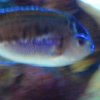-
Topics
-
Latest Update
-
0
Wts Apex EL
Letting go Apex EL 632 with energy bar, PH and Temp Probe $300 reduced to clear. Pm if keen. -
-
-
34
૮꒰ ˶• ༝ •˶꒱ა ♡ Christmas One Stop Shop ♡ ૮꒰ ˶• ༝ •˶꒱ა
Thanks for support, will close thread on 23/1/25 to allow for my zoas to regrow again. Still have sizable frags available. -
34
૮꒰ ˶• ༝ •˶꒱ა ♡ Christmas One Stop Shop ♡ ૮꒰ ˶• ༝ •˶꒱ა
Will stop all sales by 23/1/2025
-






Recommended Posts
Join the conversation
You can post now and register later. If you have an account, sign in now to post with your account.